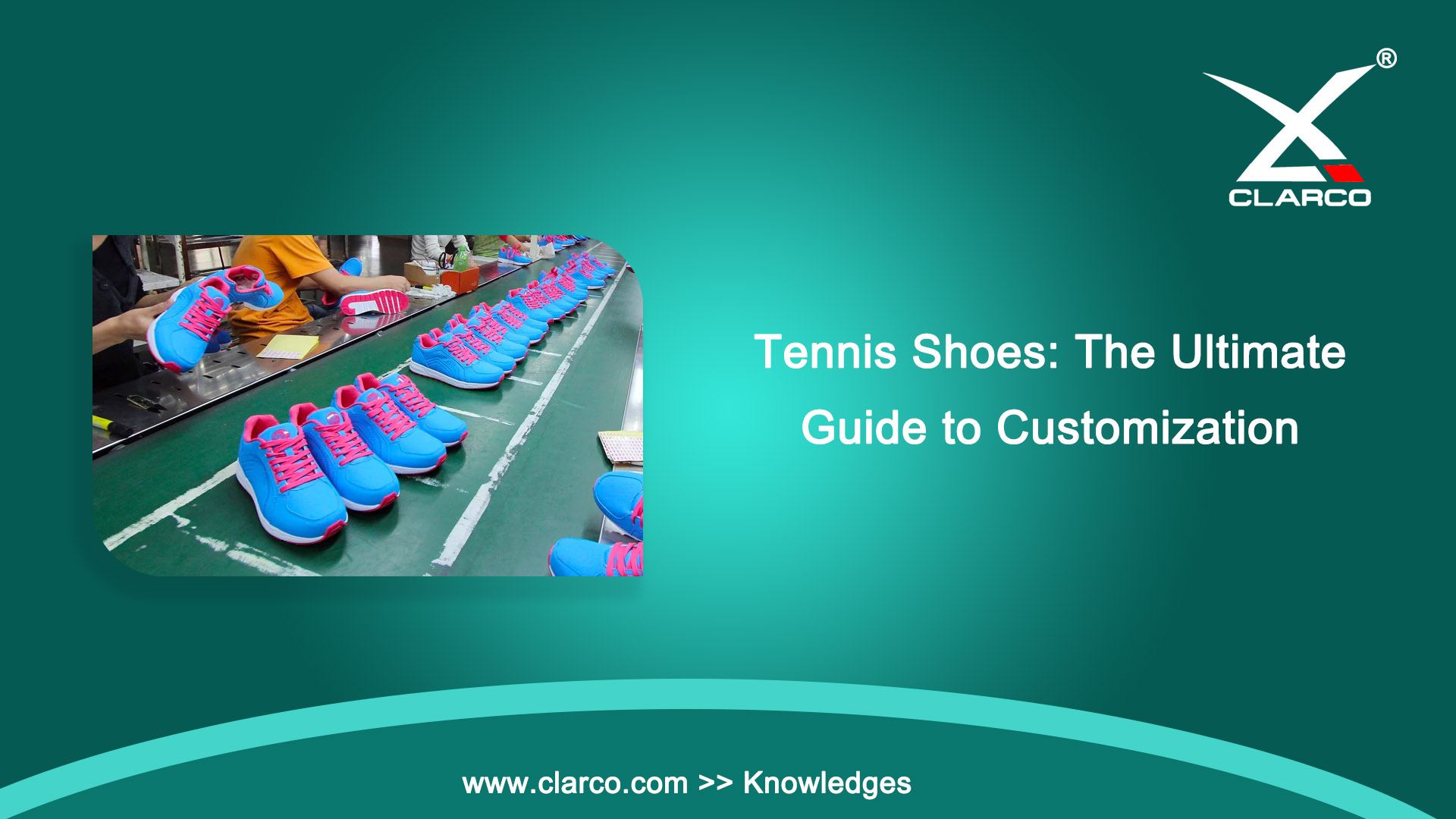Sommaire: As a wholesaler or retailer, offering custom sports shoes can be a game-changer for your business. Customized sports shoes perfectly fit customers, making them more comfortable and satisfied with their purchases. This guide will walk you through customizing sports shoes and how they can benefit your business.
Table des matières
Why Offer Customized Sports Shoes?
For several reasons, offering customized sports shoes can benefit your business as a wholesaler or retailer.
Firstly, offering customized sports shoes can give you a competitive edge. With so many shoe brands and styles available, customization offers a unique product that differentiates you from competitors. This can attract more customers to your business, increasing your sales and profits.
Secondly, customization provides a better fit for customers. Not all feet are created equal, and offering customized shoes allows customers to get the perfect fit for their unique foot shape and size. This can improve their overall comfort and reduce the likelihood of foot pain or injuries.
Furthermore, offering customized sports shoes can improve customer loyalty. Customers who have a positive experience with your product are more likely to return to your business for future purchases. This can lead to repeat business and increased customer satisfaction.
Finally, customization allows for greater creativity and personalization. Customers can choose the colors, materials, and design elements best suit their preferences. This can lead to a more emotional connection with the product, and customers may be more willing to pay a premium for a product they feel is truly unique and tailored to their needs.
How to Customize Sports Shoes
When it comes to customizing sports shoes, there are a few key steps that wholesalers and retailers can follow to ensure a successful outcome. Here are some tips on how to customize shoes for the perfect fit:
Step 1: Determine the Customer’s Needs
The first step in designing custom sports shoes is determining the customer’s needs. This involves understanding the customer’s preferences, requirements, and expectations. To achieve this, you can ask the customer questions about the intended use of the shoe, the preferred style, color, and material, as well as any other specifications they might have.
It’s also essential to consider the customer’s foot measurements and any unique features they may have, such as high arches or wide feet. Understanding these factors can help you design shoes with perfect fit and maximum comfort.
By taking the time to determine the customer’s needs, you can ensure that the end product meets their expectations and provides them with a high level of satisfaction. Additionally, happy customers are more likely to refer others to your business, leading to increased sales and growth opportunities.
Step 2: Choose the Right Materials
Customizing sports shoes requires careful consideration of the materials used to ensure high-quality products that meet customers’ needs. This applies to both casual and sports shoes, and wholesalers and retailers should prioritize the selection of suitable materials.
One of the most popular materials for customizing sports shoes is EVA (ethylene-vinyl acetate). This material is known for its lightweight, shock-absorbing properties, making it a top choice for running, basketball, and other athletic footwear. EVA is also easy to mold and shape, allowing for greater design flexibility when creating custom shoes.
Another popular material used for customizing shoes is TPR (thermoplastic rubber). TPR is a durable, flexible material with excellent traction and slip resistance. It’s often used for the outsoles of shoes but can also be used for other parts of the shoe, such as the midsole or insole.
In addition to EVA and TPR, many other materials can be used for customizing shoes. Leather and suede are popular choices for creating high-end, luxury shoes, while synthetic fabrics like mesh and nylon are often used to create lightweight, breathable shoes for sports.
Step 3: Design the Shoe
Designing the shoe is an exciting and creative step in the process of customizing shoes, where you can let your creativity shine and bring the customer’s vision to life. To design the shoe, you should consider the customer’s needs and preferences that were identified in Step 1, such as the style, color, and material.
In addition to these considerations, there are several other design elements to think about when customizing shoes, such as the shape and size of the shoe, the type of closure, and any added embellishments like embroidery or rhinestones. It’s important to ensure that the design not only looks good but also meets the customer’s functional needs. Therefore, careful attention to detail is necessary to create a shoe that not only fits well but also meets the customer’s unique style and preferences.
One effective way to design the shoe is to use a sketch or a digital rendering. This allows the customer to see a visual representation of the design before the manufacturing process begins. Getting the customer’s feedback and making any necessary adjustments before moving on to the next step is essential.
Step 4: Create a Prototype
Once the shoe design has been finalized, it’s time to create a prototype. A prototype is a sample of the custom shoe design you have created, and it is used to test the design before the final production.
You can work with a shoe manufacturer or a shoe designer to create a prototype. They will use your shoe design and create a sample shoe you can physically test and evaluate.
It’s important to remember that the prototype may not be perfect on the first attempt, so it’s essential to have a feedback system to allow you to make necessary changes and improvements to the design.
Once the prototype is created and tested, you can evaluate the design and make any necessary changes before proceeding to the final production of the custom shoes.
Step 5: Manufacture the Shoe
Once you have finalized the design and prototype of your custom shoe, it’s time to start manufacturing it. This can be a daunting task, but fortunately, many custom shoe manufacturers are available to help you bring your design to life.
When selecting a custom shoe manufacturer, there are several factors to consider. The first is the manufacturer’s experience and reputation. Look for a manufacturer with a proven track record of producing high-quality custom shoes and experience working with your chosen materials.
Another critical factor to consider is the manufacturer’s production capacity. Depending on the size of your order, you’ll want to ensure that the manufacturer you choose can produce the number of shoes you need within your desired timeframe.
It’s also essential to consider the location of the manufacturer. Working with a local manufacturer can make communication and shipping much easier, but you may find a more affordable option overseas. However, remember that shipping times and costs may be higher if you choose an overseas manufacturer.
You can move to “Where to Find Custom Shoe Manufacturers” for more details.
Step 6: Pricing Custom Shoes
After manufacturing, it is essential to price the custom shoes accurately. The price should cover the cost of materials, labor, and other overhead costs. However, it is also essential to consider the target market and the competition.
Calculating the cost per unit and adding a profit margin is one way to determine the pricing. Researching the market and determining the average price for similar products is also essential. Pricing the custom shoes too high may drive away potential customers while pricing them too low may not cover the costs and result in losses.
Another factor to consider when pricing custom shoes is the level of customization. The more intricate and unique the design, the higher the price should be. It is also essential to factor in additional services, such as personalized fitting or modifications, which may affect the final price.
Where to Find Custom Shoe Manufacturers
Regarding finding custom shoe manufacturers, China is one of the most popular destinations for wholesalers and retailers. Chinese shoe factories offer several advantages, including affordable prices, large production capacity, and a wide range of materials and designs.
One of the most significant advantages of working with Chinese shoe factories is their ability to produce high-quality shoes at a fraction of the cost of manufacturers in other countries. These cost savings are primarily due to the lower labor costs in China, where skilled workers are readily available at a lower wage rate than in many other countries. As a result, Chinese factories can produce high-quality shoes at lower prices than their competitors, making them an attractive option for wholesalers and retailers looking to save on production costs.
In addition to lower costs, Chinese shoe factories have a large production capacity, which means they can accommodate larger orders and deliver them on time. This is because many Chinese factories have advanced machinery and production lines that can produce shoes quickly and efficiently. As a result, wholesalers and retailers can rely on Chinese manufacturers to deliver orders of any size within the agreed timeframe.
Another advantage of working with Chinese shoe factories is the wide range of materials and designs they offer. Chinese manufacturers can access many materials, from traditional leather and suede to modern materials like synthetic fabrics and mesh. This means that wholesalers and retailers can select the right materials for their custom shoes to suit the needs of their target market. Moreover, Chinese shoe factories often have a team of experienced designers who can help create unique and attractive designs that are tailored to the needs of the wholesalers and retailers.
Suppose you’re wondering how to find a reliable Chinese shoe factory to execute your customisation job flawlessly. In that case, you can review the below list and enter some keywords to filter them effortlessly.
- Trade shows and exhibitions
- Referrals from other businesses or contacts in the industry
- Online directories and databases of manufacturers
- Social media platforms and online communities
- Google search
We’ve concluded a more straightforward way to find a trusted shoe manufacturer in this article.
Conclusion
Customizing shoes can be an excellent opportunity for wholesalers and retailers to meet the specific needs of their customers. It is essential to follow the steps of determining the customer’s needs, choosing the right materials, designing the shoe, creating a prototype, manufacturing the shoe, and pricing the custom shoes appropriately.
Finding the proper manufacturer can be challenging, but several options are available, including sourcing from China, attending trade shows, utilizing online marketplaces, and conducting a Google search. With careful planning and attention to detail, customizing shoes can increase customer satisfaction and business success.
Abonnez-vous à Know First
Tenez-vous au courant de nos dernières nouvelles et produits.


